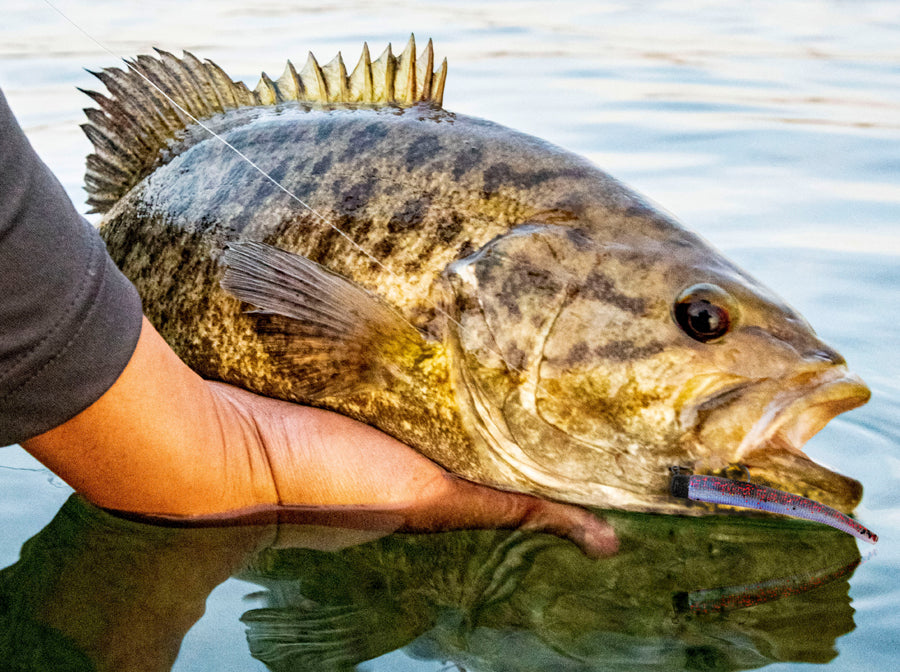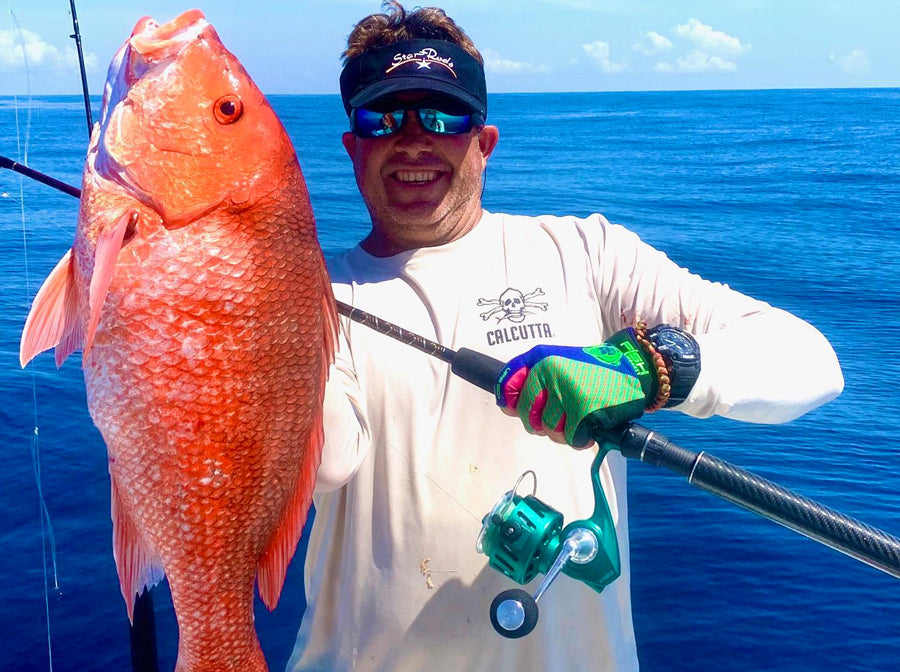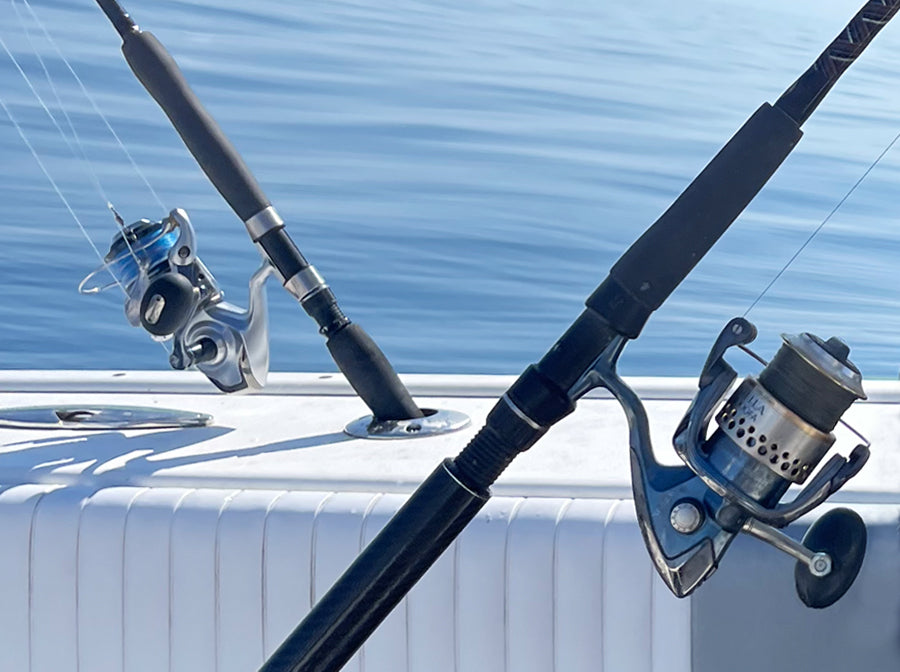When it comes to catching fish, lure color matters. Whether you’re jigging for bluegills, casting for crappie, competing in a bass tournament or trolling for stripers, success often depends on the color of lure that you use.
What is the best color for freshwater fishing lures? Which lure color attracts bass? How do you know which bait color will work in the fishing conditions you encounter?
Choosing the right lure color for freshwater fishing requires harnessing a common-sense understanding of light’s behavior below the surface and a little research. There are no guarantees of success, but optimizing your chances of landing a lunker is easier than you think when you know which bait to throw first.
There are as many variables to the equation as Mother Nature has moods. Fortunately, you’re able to inventory most by the time you hit the water. Is it a rainy day, overcast or bright and sunny? Is the water gin clear, murky or algae stained? All play a critical role in selecting a color most likely to result in a strike, but there’s a more important one—something you should address before leaving home.
The right lure color is key to catching more fish.
Lure Color Knowledge
Do some research beforehand. The naturally occurring forage those lunkers rely on varies by location, species, water, time of year and much more. Choose the color pattern of the food source they prefer and your success rate increases dramatically.
To do so, read articles, watch a video or two, ask at the bait shop and note the lure type, color, time of year and environmental conditions in which they were successful. These details are rarely specified, but valuable if you find them. The knowledge will pay off, but only if you read the lake and adapt to Mother Nature’s whims when you hit the water.
Understanding Water Visibility
Easily detected, natural-looking baits entice more strikes. Making that kind of presentation requires beginning each fishing day with an assessment of water clarity. Vibration and movement are key ingredients, but when the source of that underwater clamor is readily visible, hooksets can even be the product of an instinctive response rather than hunger.
Is it clear, algae stained to some degree or muddy? Watch how things change as you move throughout the day, too. A lake’s main body can hold clarity for hours while streams feed coves with muddy water.
If rocks and other subsurface structure are visible to some depth, start with subtle, light and even translucent color patterns—those worn by natural food sources. The appearance will be convincing and, with luck, produce results. Odds are good your prey will shy away from gaudy lures wearing a painfully visible unfamiliar look, especially those with unusually dark finishes.
As things get murkier, usually in varying degrees of green, those lures wearing subtle and natural color palettes lose their visibility. Select something with a pattern that provides improved contrast to help it stand out and, if nothing else, go with a brighter color. Chartreuse for example, is a popular choice that makes a spinnerbait more enticing as things fog up below the surface. In crystal-clear water, by comparison, white or blue skirts are often the most productive.
Muddy water, and degrees thereof, require a different approach. Lures in it will start to appear as little more than a silhouette. A proven method in that situation is to enhance that effect with black, dark brown or deep blue baits that really soak up light. A touch of sharp contrast on the body or tail—like white or chartreuse—can pay big dividends.
When fishing in murky water, choose a lure color that offers contrast.
The Sunlight Variable
Water clarity is one thing, but the amount of sunshine hitting the water also varies visibility below the surface. Before tying on that first lure, weigh how brightly the sky is and any cloud cover dimming its effect. Adjust accordingly.
There’s another consideration if you’re throwing spinners or spoons. Silver is visible from a considerable distance on bright days, but performance falls off sharply as cloud cover increases. That’s when a gold finish starts to do yeoman’s work, and it’s also a better choice in murky water.
Lure Colors for Different Depths
Study reliable fishing reports long enough and you might know exactly which fishing lure, color, size and presentation worked well last week. Unfortunately, that was seven days ago. A storm front may have blown through, arrived or be on the way. Fish move.
Even if a school stayed at the same precise GPS coordinates and they’re visible on your fish finder, it could more shallow or deeper. Even if the position is identical, cloud cover could have changed. Before tossing in and expecting instant results, weigh the resulting difference in visibility carefully before tying on your first lure. Select the one you think is best.
That, of course, means you need to be prepared. Simply buying several lures that were productive in the past is no guarantee of success. By all means add them to your tackle box and give them a try, but add the different colors and tones that allow you to respond on the water—regardless of unexpected changes and environmental conditions.
Carry lures in a variety of colors to ensure you’re prepared for changing conditions.
Kitchen Sink Approach
Armed with some solid knowledge and a willingness to adjust to Mother Nature’s whims you can maximize your chances of success during your next freshwater fishing outing. There is a caveat to that prediction, however.
There is no way of predicting what the fish want from day to day—or even if they’ll bite on anything. That gaudy, all black, gold-bladed crankbait you received as a prank gift on your birthday may just land the lunker of a lifetime. If things get slow, give it a try, along with anything else in your tackle box. You might just be surprised at the results.
More Resources
The One that Got Away: Six Ways that Anglers Lose Fish
Essential Fishing Tools for Your Tackle Box
Strategies to Optimize Your Fishing Tackle Storage






